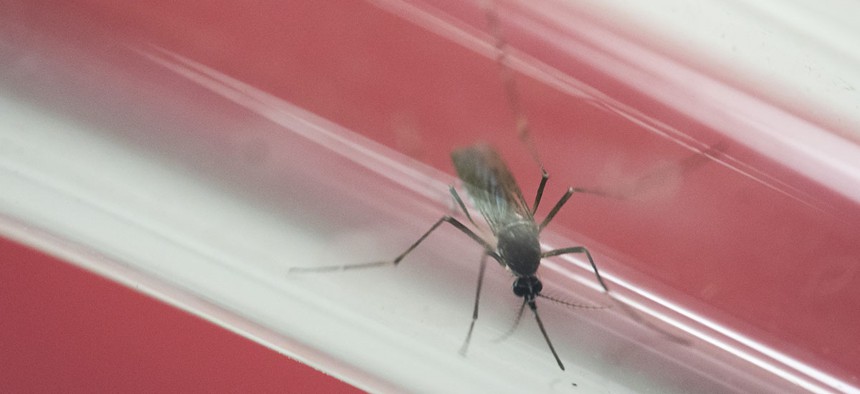Your Spare Computing Power Could Help Fight Zika

Felipe Dana/AP
Scientists are using a network called the World Community Grid to process huge amounts of data in an attempt to understand how to tackle the virus.
Blockbuster discoveries, as any scientist will tell you, are very much the exception in the world of research. The day-to-day work on the way there is usually painstaking, repetitive, and unremarkable.
To begin to figure out how to fight an emerging virus, for instance, biomedical researchers first must understand the structure of the disease on a microscopic level. They must figure out the mechanisms that make it transmissible, then screen countless chemical compounds to determine how to fight it. Each of these steps requires difficult and meticulous work—the screening process alone can drag on for years.
Eventually, if a certain compound appears to disable a key protein that makes a virus dangerous to humans, that compound might unlock a possible cure for the disease. At that point, there’s even more work to do.
Before there were computers, all this work was simply done by hand. Scientists would plop a virus in a test tube, sprinkle in some dirt, and see what happened. (You can understand, then, why science and serendipity seem to overlap so much in the annals of discovery.)
Now, such processes can be a bit more comprehensive: Computational models—of compounds and of virus proteins—can methodically discern how a virus might react to various mixes of chemicals.
But even with machines, there’s only so much work that a single computer—or a lab full of computers, or even a supercomputer—can do over a certain amount of time. That’s why, for more than a decade, an IBM-run initiative has helped scientists tap into the computing power of millions of machines across the planet as a way to speed up research into deadly diseases and other public health problems. The World Community Grid is an open-source lab that runs on the power of idle computers across the globe. Anyone can sign up to donate their machine’s untapped power.
More than 700,000 volunteers have helped biomedical researchers process complex datasets since the project launched in 2004. How it works: The grid leverages the connectivity of the Web by dividing otherwise enormous processing tasks—like checking a library of 100 million chemical compounds to see how each individually reacts to a model of Zika proteins— into manageable chunks that are then delegated to computers across the network.
That computational data is then sent back to the grid, cleaned up and checked for errors, and finally delivered back to scientists for evaluation. This is how researchers already identified a possible treatment for neuroblastoma, a childhood cancer. And it’s how today, while your computer is idle, you could help run computations to fight the Zika virus.
(The World Community Grid isn’t the only project that leverages computational power this way. SETI@Home is a similarly crowdsourced computing effort that uses the strength of a network to download and analyze telescope data to search for extraterrestrial intelligence.)
The computational processing that’s taken place across the grid in just over a decade is staggering—it’s the equivalent of 1.25 million CPU years, says Viktors Berstis, the chief architect and lead technologist of the World Community Grid. Put another way: Every day, the grid computes an amount of data that would take a high-end personal computer 500 years to complete. (Every day!)
“We’re not the absolutely highest-powered super computer in the world, but we’re up there in those ranks,” Berstis told me.
“So you have the equivalent of a very large super computer, and [scientists] get it for free,” he added. “They’re able to do things that are unimaginable to most scientists.” (Berstis also points out that, in 12 years, the system has never experienced a security breach. The grid uses a “very secure hosting site” like what you’d expect from a bank, he says.)
In fact, Berstis says, most researchers who use the grid have to deliberately reframe their established ways of thinking about how to plan a research project—because the network represents a scale of computational power that is otherwise unthinkable to them.
“We see this all the time: They’re always instinctively trying to think of how to reduce the size of their projects,” he said.
Then, when they realize they have a “ridiculous” amount of computational power at their fingertips, there’s “that ah-ha moment” about the scale of experimentation that the grid makes possible. The real hope is that one ah-ha moment leads to another, and eventually to a cure.


